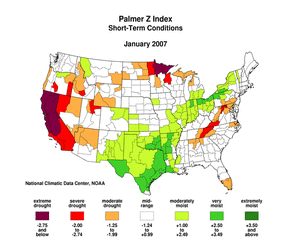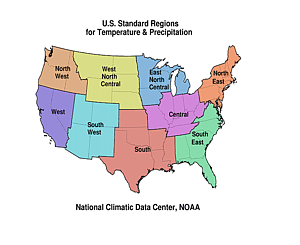At the end of January
drought continued to be concentrated in Texas and Oklahoma, the
northwestern Plains, northern Minnesota and Florida. Drought and
abnormal dryness spread across the Southwest into northern
California and Nevada (January 30
Drought Monitor). In the drought areas, soil
moisture was low, vegetative
health was fair, and streamflow
was low.
|
|
In north central Texas
and in central Florida, mandatory or voluntary water restrictions
were in place in several municipalities. Hungry horses in Alaska,
Idaho and the Dakotas received help from the U.S. Humane Society,
and hay shortages were noted in many states. Lack of forage
affected elk migration patterns in Colorado and decreased the deer
population in Wyoming. Continuing drought affected the 2007 wheat
crop in northern Oklahoma. The panfish population in Georgia
declined due to drought; substantial rains are needed for the fish
to recover. A positive impact of drought occurred in Minnesota when
a community saved money because spraying mosquitoes was not needed
due to a lack of water sources in which mosquitoes lay eggs.
Impacts in drought-stricken areas have been collected and
summarized by county at the National Drought Mitigation Center's
Drought Impact Reporter.
|



 NOAA's National Centers for Environmental Information
NOAA's National Centers for Environmental Information
